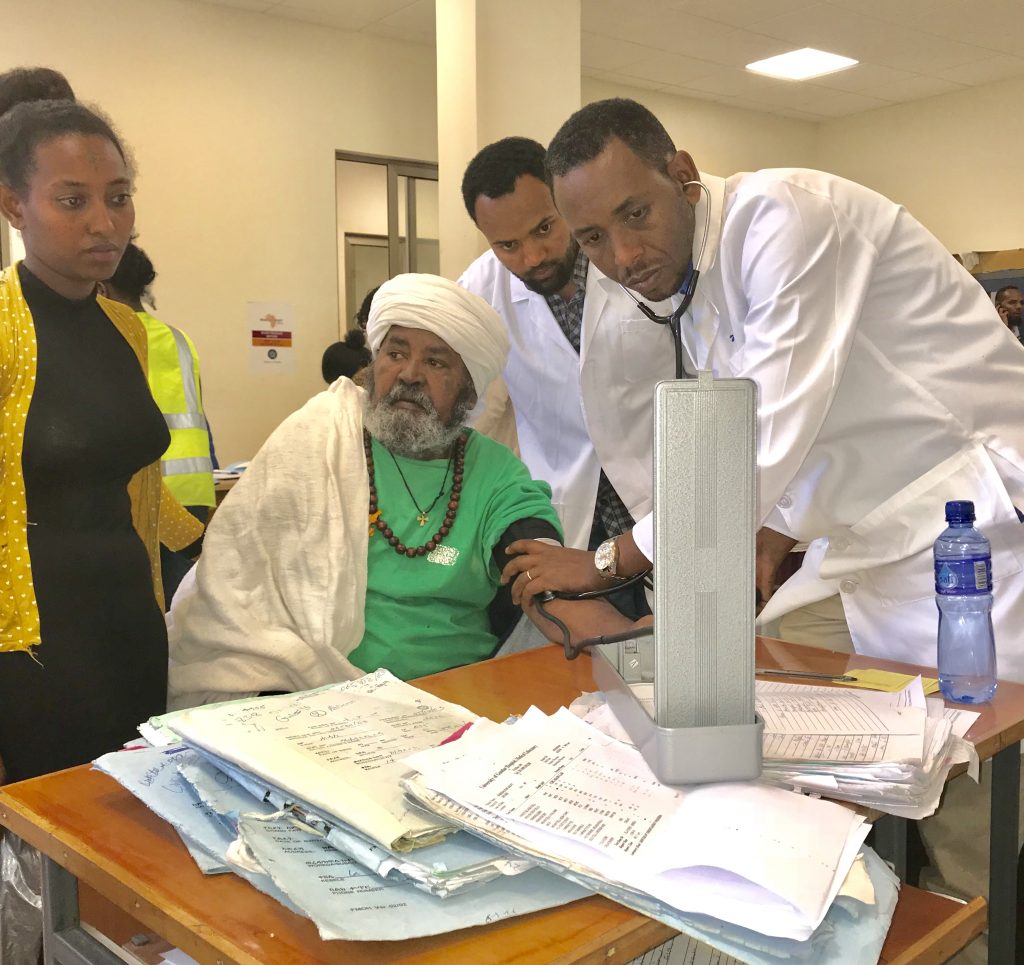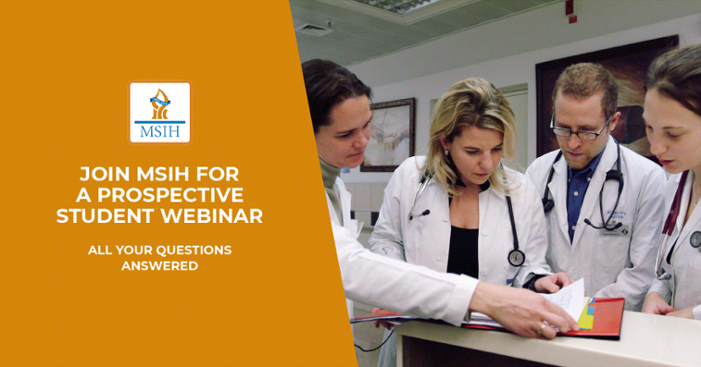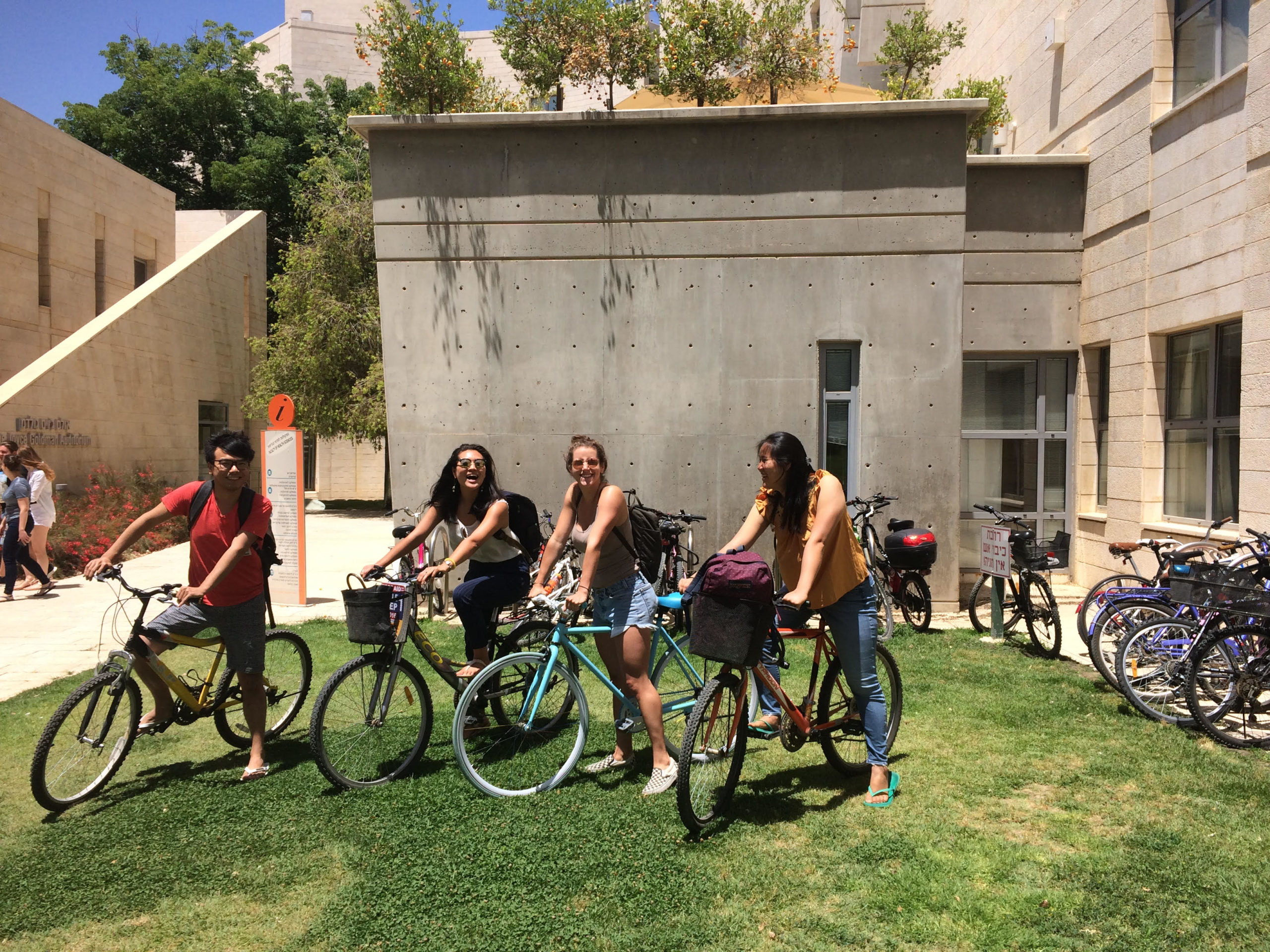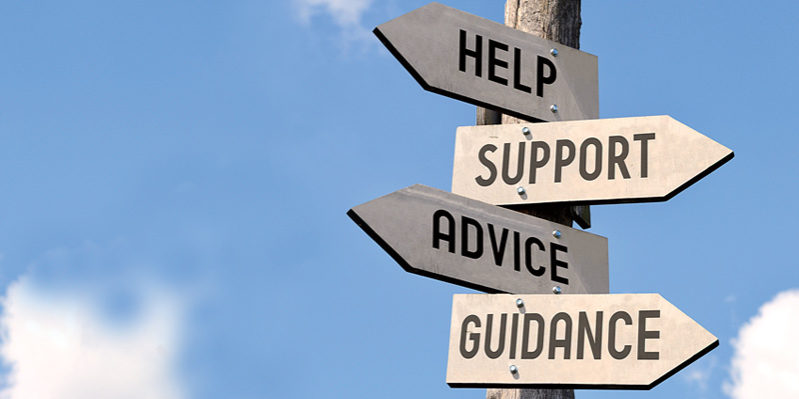Dr. Workegegnu Hailu, Chief of the Dept. of Internal Medicine at the University of Gondar Hospital takes blood pressure of an elderly patient.
Outgoing head of MSIH, Dr. Mark Clarfield is currently on sabbatical at one of the school’s partner African institutions. These are his observations after a few weeks working with colleagues at University of Gondar College of Medicine & Health Sciences.
Most people consider the health issues that challenge a country like Ethiopia to be the acute infectious diseases and the threats to the health of mother and child. Indeed these threats are still formidable with TB, HIV, malaria and diarrheal disease continuing to stalk the land. While much progress has been made in these domains, there is still work to be done.
What is less well known is that the Low Income Countries (LICs) such as Ethiopia are increasingly being challenged by a “double burden” of morbidity and mortality caused not only by the above-mentioned maladies but by non-communicable diseases (NCDs) such as hypertension and diabetes mellitus, long considered to be scourges of only the wealthier parts of the world. In fact, in a recent survey published in The Lancet, NCDs will cost the world up to $47 trillion over the next two decades with just under half of this loss occurring in the developing countries.
Hypertension
While the prevalence of hypertension in Ethiopia is still “only” 16% (higher at 22% in the towns) this disease, if untreated, is one of the leading risk factors for NCDs. More worrisome is the fact that of those with high blood pressure in the country, fully 60% have not been diagnosed. And if things weren’t bad enough, of those fortunate enough to actually be on treatment, almost 3/4 were not adequately controlled.
In an attempt to begin to come to terms with this burden, the outpatient clinics of the University of Gondar hospital (where myself and my hematologist and epidemiologist wife, Ora Paltiel, are working) holds 10 weekly sessions to counter these diseases. The crowded room, where 10 stations are crammed chock a block next to each other, manned by residents and senior physicians deal with hundreds of patients each day all suffering from NCDs, mainly but not exclusively diabetes and hypertension. COPD, the ravages of surgically untreated rheumatic heart disease and epilepsy are also handled.
I have joined in this effort, sitting several times per week with the teams in their work. Although the doctors there are extremely well trained and up to date in their clinical knowledge and general approach, having an experienced geriatrician join them in their work has contributed a lot, given that almost none of the staff had previously benefited from any instruction in care of the elderly – a group to which surprisingly high number of OPD attendees belong.






